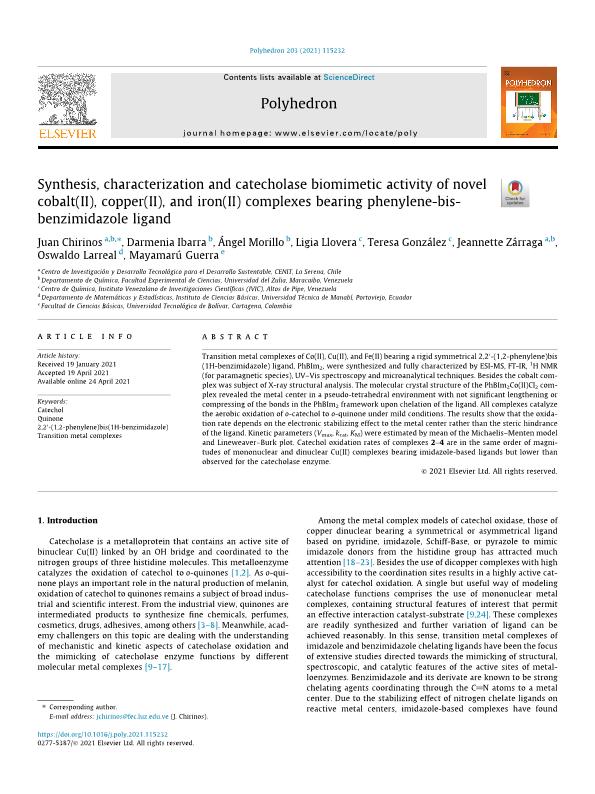Abstract
Transition metal complexes of Co(II), Cu(II), and Fe(II) bearing a rigid symmetrical 2,20
-(1,2-phenylene)bis
(1H-benzimidazole) ligand, PhBIm2, were synthesized and fully characterized by ESI-MS, FT-IR, 1
H NMR
(for paramagnetic species), UV–Vis spectroscopy and microanalytical techniques. Besides the cobalt complex was subject of X-ray structural analysis. The molecular crystal structure of the PhBIm2Co(II)Cl2 complex revealed the metal center in a pseudo-tetrahedral environment with not significant lengthening or
compressing of the bonds in the PhBIm2 framework upon chelation of the ligand. All complexes catalyze
the aerobic oxidation of o-catechol to o-quinone under mild conditions. The results show that the oxidation rate depends on the electronic stabilizing effect to the metal center rather than the steric hindrance
of the ligand. Kinetic parameters (Vmax, kcat, KM) were estimated by mean of the Michaelis–Menten model
and Lineweaver–Burk plot. Catechol oxidation rates of complexes 2–4 are in the same order of magnitudes of mononuclear and dinuclear Cu(II) complexes bearing imidazole-based ligands but lower than
observed for the catecholase enzyme














